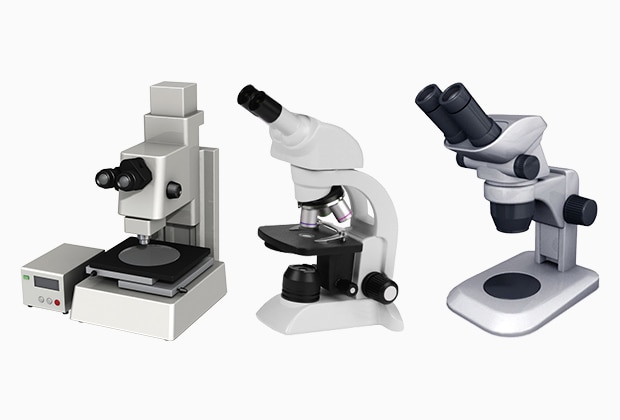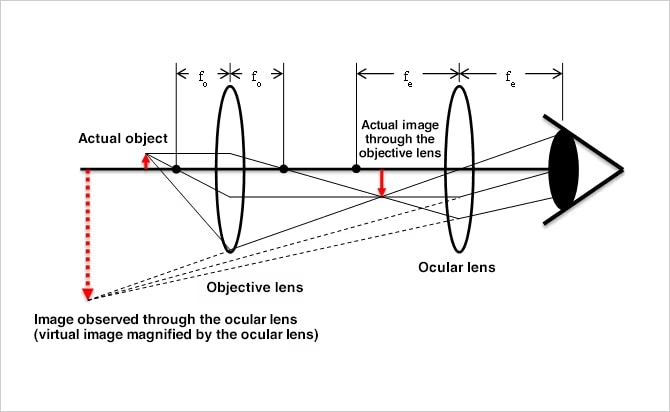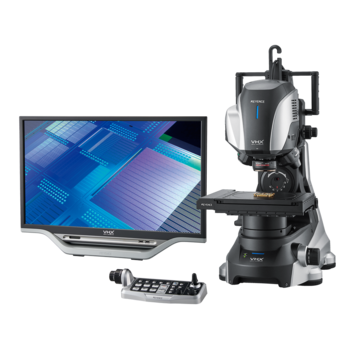Digital Microscopes
Basic Structure and Principle of Microscopes

A general biological microscope mainly consists of an objective lens, ocular lens, lens tube, stage, and reflector. An object placed on the stage is magnified through the objective lens. When the target is focused, a magnified image can be observed through the ocular lens. On the other hand, digital microscope use a camera and magnified optics to output a live image to a monitor.
Telescopes also have a similar structure; however, they are used for observing distant objects. A telescope receives light from a star or other distant object with the objective lens and adjusts the refracted light to the focal point through the ocular lens. On the other hand, a microscope is designed to emit light onto or through objects and magnify the transmitted or reflected light with the objective and ocular lenses.
We’re here to provide you with more details.
Reach out today!

Microscope Abilities

Figure: Principle that enables magnified observation with a biological microscope
Biological microscopes have multiple objective lenses with different magnifications to image samples with precision. The magnification of the microscope is the product of the objective and ocular lens magnifications.
The performance of a microscope, however, is not determined only by the magnification; the resolution is another important factor. Resolution is the ability to identify two light spots separately and is expressed as the shortest distance between two points that can still be distinguished as distinct entities. While a high magnification is needed in order to visualize small objects, the resolution will determine just how clearly they can be seen. For an optical microscope, the highest resolution is theoretically limited to approximately 100 to 200 nm due to the effect of the wavelength of visible light (400 to 800 nm). Consider using an electron microscope if you need higher resolution.
The numerical aperture (NA) is an important factor when considering the performance of the objective lens. As the NA increases, the resolution and brightness of the lens improves. When selecting a microscope, the user must check the NA of the lens, the magnification, and the resolution based on the samples intended for imaging.
Aberration, the distortion or blurring of an image caused by imperfections in the lens' shape, is another factor that influences lens performance. The more thoroughly the aberration is corrected, the higher the performance of the lens.
We’re here to provide you with more details.
Reach out today!





